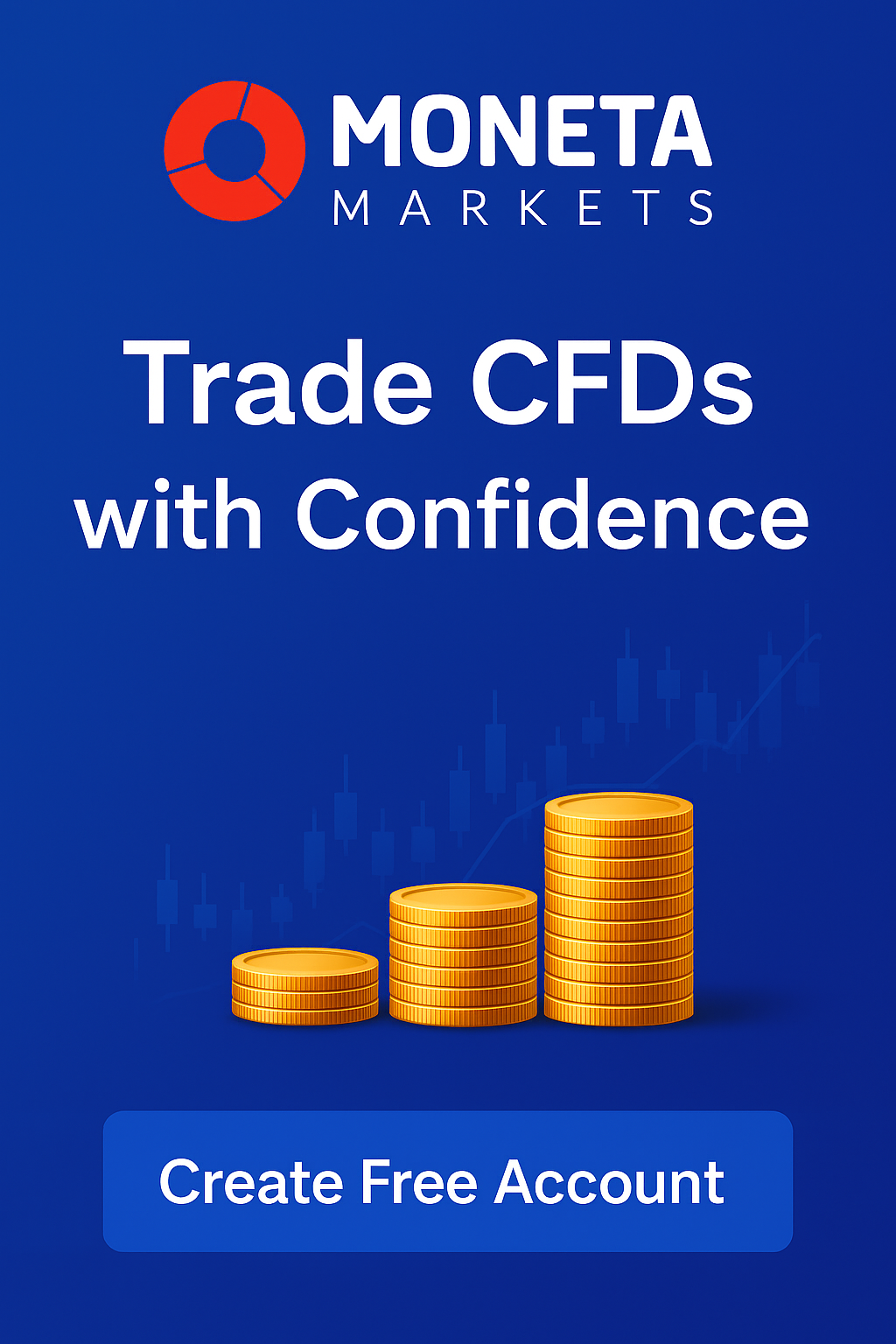CFDs vs. Futures Trading: An Essential Guide for Savvy Investors
Feeling lost in the world of investing? Maybe you just got your paycheck and are eager to make it grow, but the fluctuations in U.S. stocks are making you nervous. You’re probably wondering how to navigate the complex world of derivatives. This guide is here to help you understand the ins and outs of CFD futures trading, specifically tailored for investors in Taiwan!
Are you asking yourself, “How do I even get started with international markets? What are the differences between CFDs and futures, and which one is right for me?” This article will break down the basics of CFD futures trading. We’ll explain the key differences, risks, and rewards, giving you the confidence to make informed investment decisions.
Understanding the Basics: What are CFDs and Futures?
Let’s start with the fundamentals. Understanding the core definitions of CFDs and Futures is crucial before diving into the specifics of CFD futures trading. Many beginners get confused, so we’ll break it down simply. We aim to provide clarity and build a solid foundation for our comparison.

What is a Contract for Difference (CFD)?
A Contract for Difference (CFD) is essentially an agreement to exchange the difference in the value of an asset between the time the contract opens and closes. Think of it like betting on whether a stock will go up or down, without actually owning the stock. This makes CFD futures trading accessible even with limited capital.
You’re not buying or selling the underlying asset itself. Instead, you’re speculating on its price movement. For example, if you believe the price of gold will increase, you can open a CFD position on gold, and profit from the increase, or incur a loss if the price decreases.
What are Futures Contracts?
A futures contract is an agreement to buy or sell an asset at a predetermined price on a specific date in the future. Farmers use these a lot to guarantee a price for their harvest. This helps manage risk and ensures they get paid fairly.
Imagine a coffee shop owner agreeing to buy coffee beans at a set price three months from now. This protects them from potential price increases. That’s the basic idea behind futures contracts in CFD futures trading.
Key Distinctions: The Core Differences Between CFDs and Futures
Now that we have a basic understanding, let’s look at the key differences. Understanding these distinctions is vital for choosing the right instrument for CFD futures trading. The market structure, expiration dates, and ownership aspects all play crucial roles in your trading strategy.

Exchange-Traded vs. Over-the-Counter (OTC)
Futures contracts are typically traded on regulated exchanges, providing a transparent and standardized trading environment. Think of the Taiwan Futures Exchange (TAIFEX). This offers greater security and reduces the risk of dealing with unreliable counterparties in CFD futures trading.
CFDs, on the other hand, are usually traded over-the-counter (OTC). This means they are traded directly between two parties, usually a broker and a trader. This can offer more flexibility but also carries a higher level of counterparty risk.
Expiration Dates and Flexibility
Futures contracts have specific expiration dates. This means you must close your position or roll it over to a new contract before the expiration date. This requires careful planning and monitoring of your positions when engaging in CFD futures trading.
CFDs generally do not have fixed expiration dates. You can hold them open as long as you wish, provided you maintain the required margin. This provides more flexibility in terms of timing your trades and managing your investment horizon.
Actual Ownership and Physical Delivery
With futures contracts, there’s the possibility of physical delivery of the underlying asset, although this is rare for most retail traders. Imagine actually receiving barrels of oil! This is usually settled in cash. However, the *potential* for physical delivery influences pricing.
CFDs do not involve any actual ownership of the underlying asset. You are simply speculating on the price movement. There is no possibility of physical delivery. This makes CFD futures trading more convenient for traders who are only interested in price speculation.
Leverage, Margin, and Capital Requirements Compared
Leverage can amplify both your gains and losses. Understanding how leverage and margin work in both CFDs and Futures is crucial for managing risk in CFD futures trading. Let’s explore how these factors impact your capital requirements.

The Role of Leverage in Each Instrument
Both CFDs and futures trading offer the use of leverage. This allows you to control a larger position with a smaller amount of capital. It’s like borrowing money to increase your investment size in CFD futures trading. For example, with 10:1 leverage, you only need to deposit 10% of the total trade value.
Be careful with leverage! While it can increase potential profits, it can also magnify your losses. Always use leverage responsibly and understand the risks involved. It’s like driving a race car – exciting, but potentially dangerous if not handled with skill.
Understanding Margin Requirements
Margin is the amount of money you need to deposit with your broker to open and maintain a leveraged position. It acts as collateral. Think of it like a “good faith” deposit to cover potential losses. Initial margin is required to open the position, and maintenance margin is required to keep it open.
Margin requirements can differ significantly between CFDs and futures. Futures typically have higher margin requirements. This reflects the exchange-traded nature and the possibility of physical delivery. CFDs generally have lower margin requirements, making them more accessible to traders with limited capital.
Capital Commitment and Risk Exposure
The amount of capital you need to commit to trading CFDs or futures depends on the margin requirements and the size of your position. Higher leverage means less capital commitment. However, it also exposes you to greater risk.
Remember, even though you’re using leverage, your losses can exceed your initial investment. Always have a risk management plan in place, including stop-loss orders. This helps to limit your potential losses and protect your capital in CFD futures trading.
Advantages and Disadvantages for Modern Traders
Let’s weigh the pros and cons. Understanding the advantages and disadvantages of each instrument is crucial for making informed trading decisions in CFD futures trading. Each has unique benefits and drawbacks suited to different trading styles and risk tolerances.

Benefits of CFD Trading
CFDs offer greater accessibility due to lower margin requirements. This makes them an attractive option for beginner traders or those with limited capital looking to dip their toes into CFD futures trading. They are also available on a wide variety of assets including stocks, indices, commodities, and currencies.
The flexibility of CFDs is another significant advantage. You can easily go long or short on an asset. This allows you to profit from both rising and falling markets. This is particularly useful in volatile markets where quick decision-making is essential.
Benefits of Futures Trading
Futures contracts offer greater transparency and standardization due to their exchange-traded nature. This reduces the risk of price manipulation and ensures a fair trading environment in CFD futures trading. The prices are visible to everyone.
Futures can be more cost-effective for larger trading volumes. The spreads are often tighter than with CFDs. This can save you money on transaction costs, especially if you are an active trader executing numerous trades.
Potential Drawbacks and Hidden Risks
CFDs carry a higher level of counterparty risk since they are traded OTC. You are relying on your broker to fulfill their obligations. Choose a reputable and well-regulated broker to minimize this risk in CFD futures trading.
Futures contracts can require larger capital commitments due to higher margin requirements. This may make them less accessible to beginner traders. Also, the fixed expiration dates require careful planning and monitoring of your positions.
Regulatory Landscape and Geographic Implications
Regulations can significantly impact your trading options. Understanding the regulatory environment for CFDs and Futures is essential before engaging in CFD futures trading. CFDs are restricted in some countries, so you need to be aware of the rules.
Why CFDs are Restricted in the US Market
CFDs are currently restricted in the US market due to regulatory concerns about investor protection. The Commodity Futures Trading Commission (CFTC) views CFDs as potentially risky instruments and has chosen not to allow them for retail traders. This is because of the over-the-counter nature and lack of transparency.
While CFDs are not available in the US, futures trading is widely accessible. US residents can trade futures on regulated exchanges like the CME Group. This is a key difference to consider when thinking about CFD futures trading.
Global Regulatory Oversight and Investor Protection
The regulatory oversight of CFDs and futures varies significantly across different countries. In some jurisdictions, CFDs are heavily regulated to protect investors. In others, the regulations are more lenient. Always check the rules.
Look for regulated brokers. Choosing a broker regulated by a reputable authority ensures that your funds are protected and that the broker adheres to strict financial standards. This provides peace of mind when trading in CFD futures trading.
The Importance of Choosing a Regulated Broker
Trading with a regulated broker offers numerous benefits, including segregated client funds, transparent pricing, and access to dispute resolution mechanisms. This helps to minimize the risk of fraud or mismanagement of your funds. It’s also important to choose a broker licensed by an authority with jurisdiction over the region you’re trading in.
Always do your research and choose a broker that is licensed and regulated by a reputable financial authority. This will help protect your investment and ensure a fair trading experience in CFD futures trading. Check their history and read reviews from other traders.
Choosing Your Path: When to Trade CFDs or Futures (and CFD Futures)
Which path is right for you? Deciding whether to trade CFDs or futures depends on your individual trading style, capital, and risk tolerance when considering CFD futures trading. There’s no one-size-fits-all answer. Let’s explore how to make the best choice for you.
Matching Instruments to Your Trading Style
If you are a short-term trader or scalper looking for quick profits, CFDs may be a better fit due to their flexibility and lower margin requirements. They allow you to enter and exit positions quickly, capitalizing on short-term price movements. This could include day trading in CFD futures trading.
If you are a long-term investor or position trader, futures contracts may be more suitable due to their transparency and potential cost-effectiveness for larger trading volumes. They allow you to take advantage of long-term trends. However, the expiration dates need to be managed.
Considering Capital and Risk Tolerance
If you have limited capital and a higher risk tolerance, CFDs may be an attractive option due to their lower margin requirements. However, be aware that leverage can magnify your losses. Start small and manage your risk carefully when you’re focusing on CFD futures trading.
If you have more capital and a lower risk tolerance, futures contracts may be a better choice. The higher margin requirements help to control risk. The transparency and standardization offer a more predictable trading environment.
Demystifying ‘CFD Futures’ and Their Utility
“CFD Futures” are essentially CFDs that track the price of futures contracts. Instead of trading the actual futures contract on an exchange, you trade a CFD whose price mirrors the futures price. This gives traders exposure to futures markets with the flexibility of CFDs. They’re also called “synthetic futures”.
These instruments offer a way to gain exposure to commodities, indices, and other assets typically traded as futures, but with the margin benefits of CFD trading. They provide another layer of diversification. However, it’s important to be aware of the associated risks and choose a reputable broker.
Ready to dive deeper into derivative trading? Explore our recommended brokers offering both CFD and Futures trading options, or download our comprehensive guide to advanced trading strategies for more insights. Don’t wait to unlock your trading potential!


No responses yet